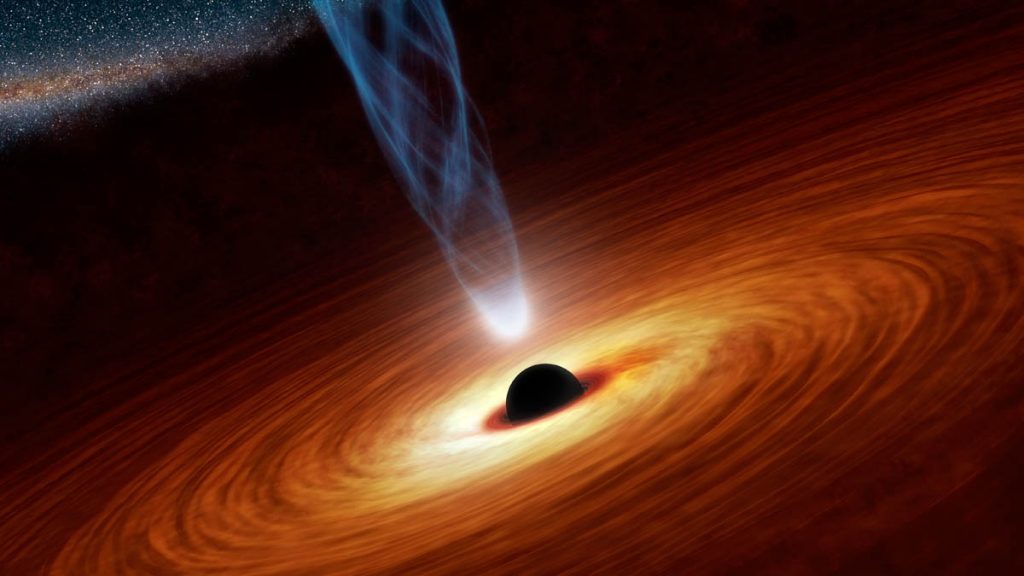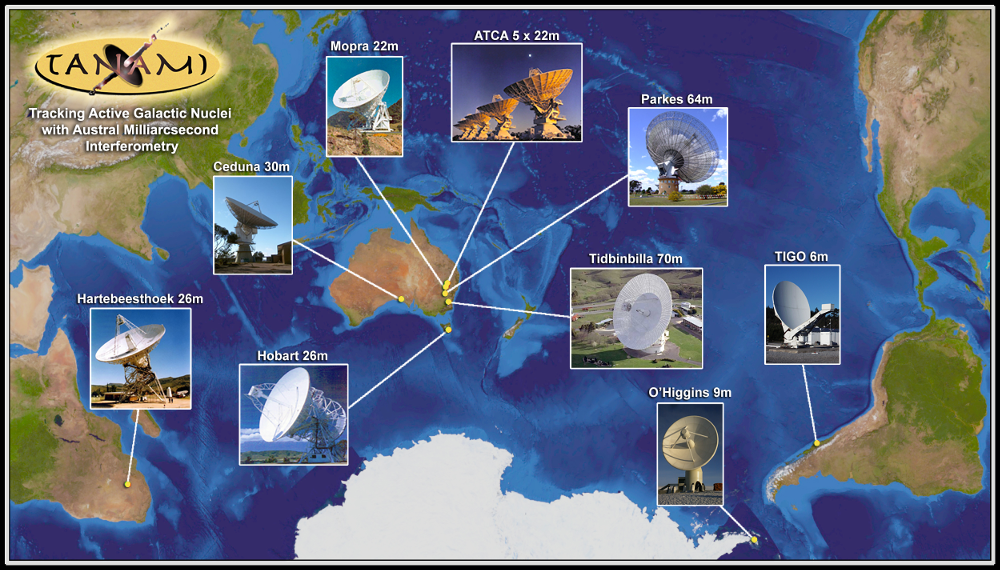Active Galactic Nuclei
The most massive representatives of compact accreting objects are the so-called Active Galactic Nuclei (AGN). AGN reside amongst the most luminous objects in the universe. They source their energy from accretion processes onto super-massive black holes of millions to billions of solar masses. While they are typically accreting about two solar masses per year, they release an immense amount of radiated energy across the entire electromagnetic spectrum from the radio to the gamma-rays. Most of this energy is emitted from a region that is by a factor 108 more compact than the host galaxy. Our research particularly comprises the study of the radiative processes related to the strong and characteristic X-ray spectra. As a tool, we use modern X-ray telescopes on-board of X-ray satellites. Our aims are to better understand the physics and geometry of the X-ray source, the accretion flow as well as the direct and more distant environment including source-intrinsic gas, dust, winds and outflows. The most extreme cases of mass outflows that we are interested in are relativistic and magnetically confined jets that we can study primarily in the radio via their synchrotron emission.

Image courtesy: MIT Kavli Institute for Astrophysics and Space Research
Understanding the X-ray source and the accreting environment by modeling accretion disk reflection
The radiation of the radio-quiet representatives of AGN, the so-called Seyfert galaxies, which lack prominent jets, is dominated by compact accretion processes. We usually observe a strong X-ray spectrum with clear signatures for X-ray photons being reflected off the accretion disk. When modeling these reflection spectra, we are able to infer valuable information on both the source of X-rays and the reflecting medium. We are involved in the development of the reflection code xillver and flavors of this model that include the (general) relativistic effects of light bending, gravitational redshifts and relativistic Doppler shifts close to the black hole in a self-consistent lamp-post geometry (relxill). In the figure shown below, the prominent and intrinsically narrow Fe K alpha line gets reflected from the inner side of the disk, where it gets distorted by these relativistic effects. The various spectra are plotted for X-ray sources (blue dot) being located at a range of heights above the black hole. A typical photon trajectory from the source towards the disk is shown as red arrow.

Image courtesy: Dr. Thomas Dauser
Studying the environment of accreting cores
The X-ray source only measures tens of gravitational radii as compared to matter that we assume to be distributed on scales of thousands to millions of gravitational radii. We can therefore investigate the physics, complex dynamics and geometry of this matter by the variability that is imposed on X-ray spectra due to changes of the structure (observed absorbing column) or ionization state of this matter. Here, we use the technique of time-resolved spectroscopy and rely on state-of-the-art spectral models for the absorption and emission of (photo-/collisionally) ionized or neutral matter. See also the section on “absorption in the interstellar medium” for more information on the model TBNEW that is developed and supported by Prof. Dr. Jörn Wilms at the Dr. Remeis Observatory. Our approach is shown in the following video (credit: NASA & Wolfgang Steffen, UNAM) that is part of a corresponding press release lead by our close collaborator Dr. A.G. Markowitz (CASS San Diego / NCAC Warsaw).
AGN jets in the radio light
Our research on relativistic AGN jets is done in close collaboration with Prof. Dr. Matthias Kadler and his group at the Institute for Theoretical Pysics and Astrophysics of the University of Würzburg. Our interest is related to the observations of jets on small (light years) and large scales (thousands of light years) using world-wide networks of radio telescopes, so-called radio interferometers. We interpret our data jointly with leading theorists in the field and particularly aim for a better understanding of jet launching processes, jet propagation and physics and the interaction of jets with the ambient medium. As part of the TANAMI program, we have been able to provide images that probe the jet of Centaurus A closest to the black hole just after launch with unprecedented spatial resolution (fractions of a light year). The following image shows that this jet remains powerful on thousands of light years.

Image courtesy: Dr. Cornelia Müller
We also make use of polarization information to infer jet-intrinsic properties such as the evolution and dynamics of shocks propagating inside the jet and their influence on the underlying magnetic field. By doing so, we also touch upon the topic of the jet magnetization.
Blazar spectral energy distribution

Image courtesy: TANAMI collaboration
The multiwavelength character of AGN is the basis of our joint collaboration with the University of Würzburg as part of the TANAMI collaboration. On our webpage, we also provide information for the broad audience including graphics, jet images and movies. The sources of interest are AGN with strong relativistic jets that are believed to be pointed close to our line of sight. As a result, we expect the broad-band spectrum to be entirely dominated by synchrotron and Comptonized emission from these jets, which form two characteristic “humps” in their spectral energy distributions (SEDs) as shown here for the example of PMN J1802−3940 (image courtesy: Dr. Felicia Krauß).

Image courtesy: Dr. Felicia Krauß
While the lower-energy “hump” is a result of synchrotron radiation, there are two explanations for the emission at higher energies depending of the jet composition which might be either leptonic or hadronic. Possibly it is a combination of both. Another unsolved mystery is the origin of recently detected extragalactic PeV neutrinos. AGN jets are discussed as the most promising candidates. We are working on searches for possible counterparts using time-series analysis of gamma-ray data in comparison with neutrino arrival times as well as measurements on the expected neutrino rates using SEDs. A positive connection would act as a clear evidence for a hadronic component. In order to map these SEDs and to get to the bottom of the raised questions, we investigate physical models to match multi-wavelength data from the radio to the gamma-rays using ground- and space-based facilities and observatories.



